How can we share and connect from afar on a tactile level in this period of social distancing? How can we bring colours into our lives? These questions triggered the development of a project aiming at involving people in a creative and collective activity called Travelling Colour Book Project and featuring special travelling artist’s books. The author of this initiative is Camila Aguais, a British-American educator, curator, artist and dancer born in Boston and currently teaching art at TASIS The American School in England. Camila, who also manages the Fleming Gallery (exhibiting artworks by students, teachers and artists), took part in presence in the second week (28th September – 5th October 2020) of Embedded Arts Practice in a Post-Pandemic Future, part of UNIDEE residency programs, during which she conceived her project. The participation in the module was inspirational for her research, as mentioned in a previous article by visiting research curator Andy Abbott, “through the lens of a ‘post-pandemic’ future, participants gained practical and theoretical knowledge about the past, present and future landscapes of art for responsible transformation of society that they can then apply in both the post-industrial context of Biella and their own locale”.
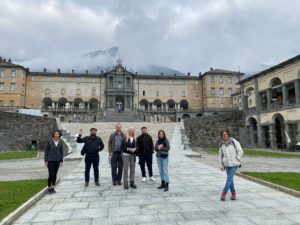
From this point of view, Camila’s project aimed at reducing the social distancing made necessary by the pandemic through art. The Travelling Colour Book Project is in fact an activity that places colour and creativity at the service of participation, with instruments that are as simple as effective: a few special volumes of coloured paper. Camila’s idea consists in leaving each of these hand-made books – initially produced in a variety of shades of the same colour – in a coffee shop, making them available to all staff or customers wanting to take part in the project. How? Taking home the book and all the artistic tools provided by the coffee shop to freely work on one of its pages: they can write, draw, make a collage, etc. Once the contribution is completed, the book is taken back to the coffee shop, which will make it available to someone else. This way the book travels from home to home, becoming a collection of personal – and at the same time collaborative – creative moments.
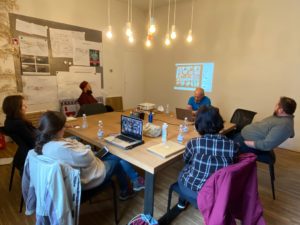
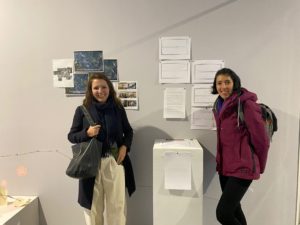

As emphasised by Camila, this project offers an alternative way to connect in times of Coronavirus. “Instead of a blank white-page drawing pad,” she said, “participants are presented with a wide range of shades and textures that will contribute to determining how they will use the space. Provided with paper and writing/colouring instruments in warm and cool hues, participants can experiment with different combinations, free to add or remove contents. With the book travelling from person to person, inspiration can also be found in the contribution of someone else”. Each completed book will therefore be a sort of visual and physical record of a creative and collective experience. “In a period in which many of us are in search of new ways of spending their time at home,” Camila added, “the Travelling Colour Book Project encourages people of all ages and backgrounds to interact with colours and paper in a creative way. Colours pervade our daily lives and influence more decisions that we might think. In times of uncertainty and loneliness, travelling colour books invite people to slow down, see, touch, explore, imagine and leave their mark on these co-created art objects”.
After being distributed and completed, the series of travelling colour books will be photographed to produce a printed photo book, which will then returned to one of London’s illy coffee shops. The Travelling Colour Book Project won Camila the Production Prize offered by illycaffè, partner of UNIDEE’s 2020 programme, which will allow the project to start from one of their coffee shops in the English capital. We have talked to her to find out more about her residency at Cittadellarte and her project.
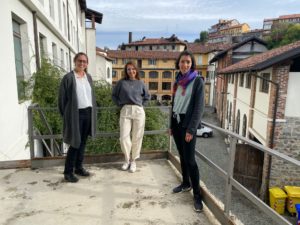
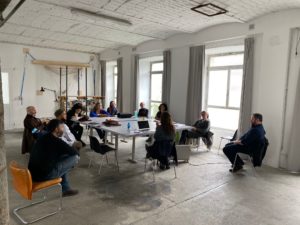
What did your week as a resident give you on artistic and personal levels?
The personal and artistic parts were interconnected. The week spent at Cittadellarte was an extraordinary opportunity to discuss and analyse artistic themes with the other participants. The regular conversations with Juan, Andy and Clara were also an important part of the experience. It intrigued me to think of the role of art and artists in today’s and tomorrow’s societies in different contexts. Spending this time in Biella, in the spaces of Fondazione Pistoletto, was inspirational also for my professional work.
You run a gallery and you teach art. How has your experience at Cittadellarte enriched your work as a teacher and your creative approach?
My experience demonstrated the fact that many different themes concerning our daily life can be connected to art. It was interesting for me to notice how people working at Cittadellarte are engaged in different fields. That made me understand that the same is true in my professional context, in which apparently distant themes can actually be harmoniously connected.

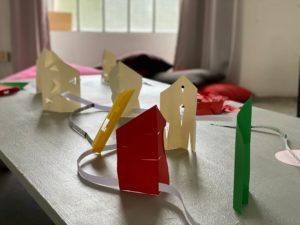
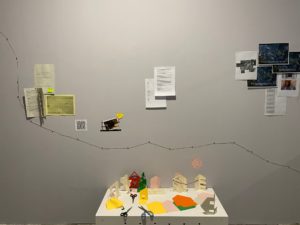
You took part in the second week of UNIDEE’s residency in presence. What artistic contaminations did you derive from mentors and fellow participants?
The heterogeneity and internationality of the group was in my opinion extremely relevant. This allowed us to get to know different cultures in a single place, and share our different points of view on art and society. All participants had had experiences in the fields of art and curatorship, and it was therefore interesting to compare and analyse the relationship between artist and curator.
You said that you have been worried about the technological dependency and the isolation caused by the pandemic. Also in reference to the Third Paradise, how can a balance between nature and artifice be achieved in times of Coronavirus?
I think it’s important to consider both perspectives, without overusing either, and to be able to appreciate every means we have to virtuously connect technology and nature. We talked about this dualism in the course of the residency too, discussing the impact the pandemic has had on our daily lives. Technologies like Zoom, for example, have made it possible for us to work together in spite of distances, as shown by the module itself, which was conducted both online and in presence. However, relying too much on digital communication leads us to neglect our very human needs of engaging on both social and tactile levels.
With your Travelling Colour Book Project, you have given an example of the potential that creativity can have in the context of this health emergency. Can art be a key element of social rebirth in the post-pandemic?
I believe that art has always been and will continue being important because any form of art provides an opportunity to reflect and express oneself. Visual art, or in fact everything created with our hands like also writing or drawing, triggers useful reflections on personal and creative levels. The books of the project have a concertina structure: when unfolded, they stretch to a length of two metres, which represents both symbolically and physically the social distancing imposed by the rules established to contain the virus.
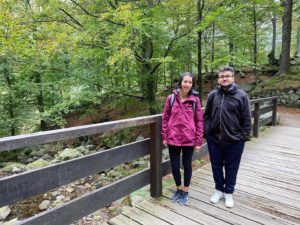
What are the objectives of your project? Why did you choose colour as the key element of its structure and identity?
I hope it will represent an opportunity to offer reflections and comments without restraints, as if it was a journal shared by many people. The objective is to involve the participants inviting them to collaborate in an artistic way and to use their hands to freely express themselves. The chromatic component is very important: we are surrounded by colours and we all have our favourite. Many choices we make are influenced by colours. I have chosen colour as a theme because it’s so simple yet abstract and accessible to all. How can you describe a colour? I also think that colour, as well as the material of the pages of the volumes, will influence the creative approaches and contributions.
How valuable has been for you to receive illycaffè’s Production Prize?
I now have five months to complete the initiative, I’m really looking forward to it. I’m extremely grateful to illycaffè and to UNIDEE. Thanks to this prize, I will be able to carry out my project, which, for me, is a fantastic opportunity.

